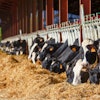
I will close this series on net energy by briefly discussing some of its negative aspects. Here, I will basically dissect its method of estimation and the disparity between research and practice, along with side effects from excessively lowering crude protein concentration in broiler feeds.
The net energy of any ingredient can be estimated by three methods. The first, which is the most widely used, is based in a conversion factor or more complex formula based always on the metabolizable energy. The latter is extensively researched, and the values used are considered more than reliable. The second method is more direct and tests each ingredient based on the heat produced by consuming such ingredient. This is an expensive method because it requires a well-equipped laboratory and top-notch research staff. Finally, the third method is based on comparative slaughter analyzing carcass composition to estimate the amount of energy gained. There is no consensus on which method is best, but in other species the first method has been shown to be the weakest as it is based on assumptions extrapolated from research.
Even in other monogastric species, namely swine, the application of the net energy system has not yielded the results it promises – again, when simple corn-soy feeds are fed. In broilers, there have been many attempts over the past decades to establish a system above the one used extensively (the AMEn), but they have all failed in practice. Thus, the net energy system is not a new concept in broilers, but rather a rekindling of an old flame. Whether it will succeed this time is something that remains to be seen. Personally, I am not optimistic or even enthused.
There was a time when every step we took in lowering crude protein concentration in the feed, by adding the missing amino acids, we were able to maintain animal performance and lower feed cost. In fact, this was the main theme of my Ph.D. thesis. But more recent research has started to indicate that there is a point beyond which we cannot just replace natural protein by manufactured amino acids. The reasons are many and some remain a matter of research but, in practice, feed professionals remain skeptical. However, there are two opposing interested parties pushing from their direction. In my opinion, the truth, as always, is somewhere in the middle, and this “middle” ground can switch easily in either direction depending on price, quality and availability of raw materials.

















